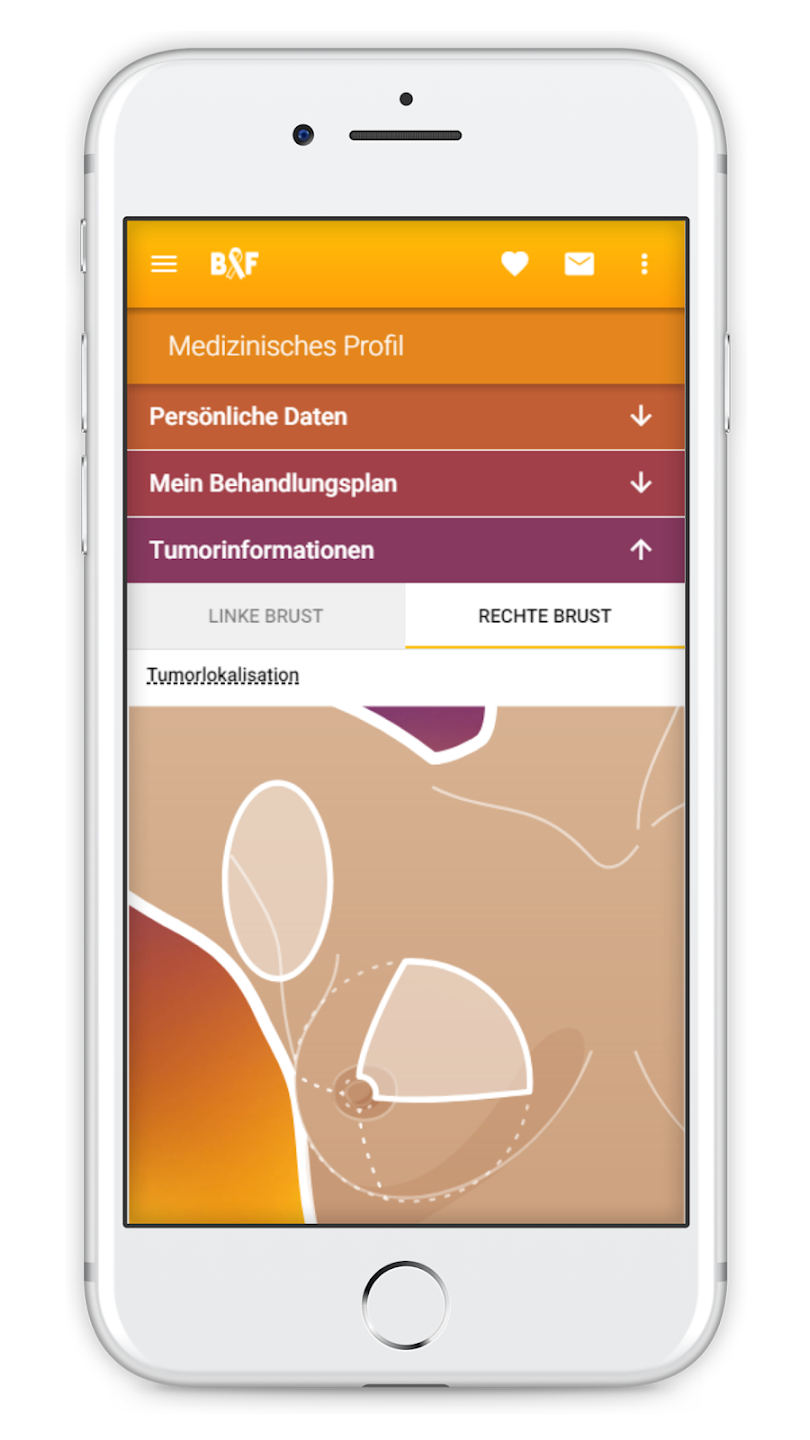Covid-19 predictors: safety of gynecologic oncology patients receiving systemic cancer therapy.

Shutterstock: 1788650399
There are types of cancer that are particularly common in women or, due to anatomical conditions, can only occur in women. These include, among others, breast cancer and ovarian cancer1 2 3. Systemic therapy methods are available for both diseases. These include chemotherapy and antibody therapy, among others. Patients who undergo systemic therapy have to contend with various impairments and side effects. These include hair loss and fatigue, as well as an increased risk of infection and inflammation. Affected patients must therefore pay particular attention to preventive (hygiene) measures to protect themselves against infectious diseases.4 5 6
The team around Dr. Heike Jansen of the Clinic and Polyclinic for Gynecology at the Klinikum rechts der Isar of the Technical University of Munich has been conducting a feasibility study on the collection of self-report and vital data of patients undergoing systemic cancer therapy since September 2021. The aim is to find out to what extent the vital parameters measured with the cosinuss° in-ear sensor are suitable for telemonitoring in order to detect and treat infections at an early stage.
Breast cancer
Breast cancer is the most commonly diagnosed cancer in women7 8. About one in eight women (12.3%) worldwide is at risk of developing breast cancer during their lifetime9. Breast cancer (mammary carcinoma) is a malignant tumor that develops in the mammary gland, grows into the surrounding tissue and destroys it. As the disease progresses, tumor metastases can spread throughout the body.10. There are many different types of breast cancer. The type is determined by specific characteristics of the tumor as well as the type of cells in the breast that are affected. Most breast cancers are carcinomas. Most commonly, adenocarcinomas occur in the glandular cells of the milk ducts or milk-producing glands. In addition, breast cancer is also classified according to certain types of proteins or genes that each cancer can form11.
Nowadays, breast cancer is curable in most patients, as many tumors are detected early12. To detect breast cancer as early as possible, it makes sense to have regular examinations. In Germany, for example, women over the age of 30 can visit their gynecologist once a year for a breast and armpit scan. Women between the ages of 50 and 69 can have a mammogram performed every two years at a specialized examination center as part of a screening program.13
The treatment of breast cancer usually starts with surgical removal of the tumor (breast-conserving if possible). In many cases, the operation is preceded by supplementary drug treatment (neoadjuvant therapy) or followed by surgery (adjuvant therapy). This measure reduces the risk of recurrence and metastases. Depending on the situation, radiation therapy, hormone deprivation treatment or targeted antibody therapy may be considered – or a combination of all methods.14
Ovarian cancer (ovarian cancer)
Ovarian cancer ranks as the seventh most commonly diagnosed cancer in women worldwide15. A woman’s risk of developing ovarian cancer during her lifetime is one in 78 (1.27%)16. Ovarian cancer is a proliferation of cells that forms in the ovaries. In this process, the cancer cells multiply rapidly and can invade and destroy healthy body tissues17 .
Unlike breast cancer, there is no regular screening for ovarian cancer in non-risk patients. The Pap test to detect cervical cancer is not suitable as a diagnostic tool. Often, the disease is detected late. Regular pelvic examinations by a gynecologist are therefore an important part of early detection. In addition, it is important to pay attention to possible symptoms, which, however, only appear at a later stage and are very unspecific18. These include abdominal swelling, rapid feeling of fullness when eating, unexplained weight loss, fatigue, and frequent urination.19 20
Treatment of ovarian cancer consists of surgery followed by chemotherapy21.
Systemic cancer therapy weakens the immune system
During and after cancer therapy, patients are often more susceptible to inflammation and infection because their immune system is weakened. The immune cells that are continuously produced in the bone marrow to defend against pathogens are disrupted by chemotherapies, for example. Some antibody therapies can also affect the immune system.22
Study
Study objective
The problem of increased susceptibility to infections due to the weakened immune system caused by cancer therapy, can potentially be reduced by early detection of inflammatory processes. In the interventional feasibility study of the Clinic and Polyclinic for Gynecology of the Technical University of Munich, various data of patients undergoing systemic therapy due to breast or ovarian cancer will therefore be collected over a time frame of three months (between September 2021 and the end of August 2022).
The aim is to find out to what extent the vital parameters measured are suitable for telemonitoring, in particular for the early detection of infections and if these can even be treated remotely (remote patient care) – an aspect that was particularly important at the beginning and in the phases with high case numbers in the Corona pandemic.
Study design
This is a feasibility analysis. The primary endpoints are compliance (defined by wearing time of the in-ear sensor) and technical robustness of the PPG signal.
In addition, secondary endpoints of the measurements include number of true and false positive alarms (comparison of alarms to clinical data), number of contacts and hospitalization rates (comparison of alarms and resulting contacts and hospitalization rates to clinical data), infections (detection of infections from suspicious PPG signal transmissions or PROM data; resulting in a blood test to verify acute infections), impact on quality of life, and health-related costs (cost-effectiveness analysis).23
Sample
The 100 adult study participants mainly suffer from breast or ovarian cancer and undergo various systemic therapies (e.g. chemotherapy, antibody therapy).
Method
Two types of data collection serve as intervention. Firstly, questionnaires (PROM = Patient Reported Outcome Monitoring) are used, which can be completed by the participants via the app „Meine Busenfreundin“ developed by a team led by Professor Marion Kiechle of the Women’s Clinic at Klinikum rechts der Isar. This is linked to the clinic information system via data integration software, so that the data can be imported directly and evaluated by the study participants.
App “Meine Busenfreundin” – sample representation of the app screens (Source: play.google.com/store/apps/)
Secondly, cosinuss° in-ear sensors are used to record the vital parameters (cosinuss° Two). These are worn by the patients for a period of three months during the day and also for several hours at night. Using PPG and temperature sensors, pulse rate, oxygen saturation, body temperature and respiratory rate are measured continuously and sent to the cosinuss° Health platform via a stationary gateway. The collected data can be directly analyzed by the study participants via the cosinuss° Health web interface. At the same time, the platform is also linked to the hospital information system so that all collected data can also be imported and stored centrally.

In-ear sensor cosinuss °Two
Results and outlook
With 100 patients participating, recruitment is complete. The study will run until the end of September 2022.
The data will then be analyzed. The resulting scientific work will follow in the coming months. Corresponding results will be linked here as soon as the evaluations have been completed.
January 2024: Results of the feasability study
The results of the feasibility study can be accessed here: https://link.springer.com/article/10.1007/s00129-023-05189-4
Jansen, H., Martens, E., Wacker, V. et al. Telemedizinische Überwachung ambulanter onkologischer Patientinnen. Gynäkologie 57, 27–32 (2024). https://doi.org/10.1007/s00129-023-05189-4
Quellen / References
- Cancer Facts for Women | Most Common Cancers in Women [Internet]. [cited 2022 Jun 7]. Available from: https://www.cancer.org/healthy/cancer-facts/cancer-facts-for-women.html
- Women’s cancers (gynaecological cancer) | Cancer Research UK [Internet]. [cited 2022 Jun 7]. Available from: https://www.cancerresearchuk.org/about-cancer/womens-cancer
- Terrie YC. Gynecologic Cancers What Every Woman Should Know. US PHARMACIST. 2017;42(9):HS18–22.
- Krebsinformationsdienst: Entzündungen und Infektionen bei Krebs: Ursachen und Risikofaktoren https://www.krebsinformationsdienst.de/leben/entzuendung-und-infektion/ursachen-risikofaktoren.php (letzter Abruf: 18.8.2022)
- Krebsinformationsdienst: Chemotherapie bei Brustkrebs https://www.krebsinformationsdienst.de/tumorarten/brustkrebs/chemotherapie.php (letzter Abruf: 18.8.2022)
- Krebsinformationsdienst: Infektionen bei Krebs vorbeugen https://www.krebsinformationsdienst.de/leben/entzuendung-und-infektion/vorbeugung.php (letzter Abruf: 18.8.2022)
- in 140 countries
- McGuire S. World Cancer Report 2014. Geneva, Switzerland: World Health Organization, International Agency for Research on Cancer, WHO Press, 2015. Advances in Nutrition. 2016 Mar 1;7(2):418–9.
- Rojas K, Stuckey A. Breast Cancer Epidemiology and Risk Factors. Clinical Obstetrics & Gynecology. 2016 Dec;59(4):651–72.
- Krebsinformationsdienst: Was ist Brustkrebs? https://www.krebsinformationsdienst.de/tumorarten/brustkrebs/was-ist-brustkrebs.php (letzter Abruf: 18.8.2022)
- What Is Breast Cancer? | American Cancer Society [Internet]. [cited 2022 Jun 8]. Available from: https://www.cancer.org/cancer/breast-cancer/about/what-is-breast-cancer.html
- Krebsinformationsdienst: Was ist Brustkrebs? https://www.krebsinformationsdienst.de/tumorarten/brustkrebs/was-ist-brustkrebs.php (letzter Abruf: 18.8.2022)
- Krebsinformationsdienst: https://www.krebsinformationsdienst.de/tumorarten/brustkrebs/frueherkennung.php (letzter Abruf: 18.8.2022)
- Krebsinformationsdienst: Brustkrebs-Früherkennung https://www.krebsinformationsdienst.de/tumorarten/brustkrebs/behandlung-uebersicht.php (letzter Abruf: 18.8.2022)
- Brett M. R, Jennifer B. P, Thomas A. S, Brett M. R, Jennifer B. P, Thomas A. S. Epidemiology of ovarian cancer: a review. Cancer Biology & Medicine. 2017;14(1):9–32.
- Ovarian Cancer Statistics | How Common is Ovarian Cancer [Internet]. [cited 2022 Jun 8]. Available from: https://www.cancer.org/cancer/ovarian-cancer/about/key-statistics.html
- Ovarian cancer – Symptoms and causes [Internet]. Mayo Clinic. [cited 2022 Jun 8]. Available from: https://www.mayoclinic.org/diseases-conditions/ovarian-cancer/symptoms-causes/syc-20375941
- Krebsinformationsdienst: Eierstockkrebs (Ovarialkarzinom) https://www.krebsinformationsdienst.de/tumorarten/eierstockkrebs.php (letzter Abruf: 18.8.2022)
- Ovarian cancer – Symptoms and causes [Internet]. Mayo Clinic. [cited 2022 Jun 8]. Available from: https://www.mayoclinic.org/diseases-conditions/ovarian-cancer/symptoms-causes/syc-20375941
- Stewart C, Ralyea C, Lockwood S. Ovarian Cancer: An Integrated Review. Seminars in Oncology Nursing. 2019 Apr;35(2):151–6.
- Ovarian cancer – Symptoms and causes [Internet]. Mayo Clinic. [cited 2022 Jun 8]. Available from: https://www.mayoclinic.org/diseases-conditions/ovarian-cancer/symptoms-causes/syc-20375941
- Krebsinformationsdienst: Entzündungen und Infektionen bei Krebs: Ursachen und Risikofaktoren https://www.krebsinformationsdienst.de/leben/entzuendung-und-infektion/ursachen-risikofaktoren.php (letzter Abruf: 18.8.2022)
- A complete list of primary and secondary endpoints can be found here: https://www.clinicaltrials.gov/ct2/show/NCT05043220?term=in-ear+sensor&draw=2&rank=3


